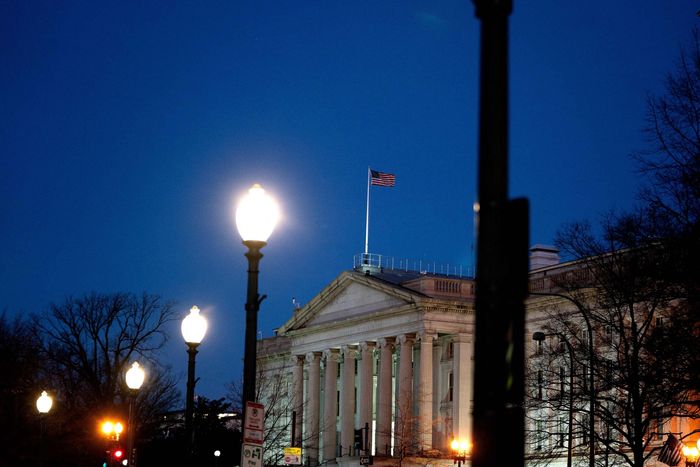A turbulent start of the year for U.S. stocks has entered a new phase in recent days, with investors weighing good news about corporate earnings and the labor market against the stubborn challenges of high inflation, rising bond yields and geopolitical uncertainty.
One takeaway from the past week in markets is that 2022 is starting to look like what many predicted heading into the year. Stocks have generally fared better than in January, when they fell sharply in anticipation of tighter monetary policies, but are still buffeted by conflicting trends that are widely expected to keep prices volatile.
A driving force behind many market swings remains the increase in U.S. government bond yields, fueled by escalating expectations for how high the Federal Reserve will raise short-term interest rates this year.
Yields, which rise when bond prices fall, are a bedrock gauge for investors because they help dictate borrowing costs on everything from mortgages to corporate debt. They are also a major component of financial models used to value stocks and other assets. All else being equal, the ability to earn higher returns on risk-free bonds makes the future earnings of businesses less valuable, dragging down share prices.
For much of January, analysts widely agreed that this simple relationship was paramount for stocks. The yield on the benchmark 10-year U.S. Treasury note surged from 1.496% at the end of last year to 1.866% on Jan. 18. Stocks fell, led by technology companies, many of which are especially sensitive to rising rates because their value stems largely from their potential earnings down the road.
Since then, the relationship between bonds and stocks has grown more nuanced. Stocks were able to rebound over a period when bond yields stabilized, but they still rose broadly even when yields climbed sharply on Feb. 4, following a better-than-expected jobs report. Yet stocks fell Thursday after consumer-price index data showed inflation reached another four-decade high last month, and equities extended declines Friday in the midst of growing worries about a potential Russian invasion of Ukraine.
By the end of Friday, the S&P 500 had logged its fourth weekly decline out of the past six weeks, falling 1.8%. The 10-year yield settled at 1.951%, down from 2.028% on Thursday, setting up a week in which investors will track the latest developments on the Russia-Ukraine situation, earnings from the likes of ZoomInfo Technologies Inc. and Airbnb Inc., and clues from Fed officials about their plans for the March policy meeting.
“It’s topsy-turvy,” said Jackie Cavanaugh, portfolio manager of the Putnam Focused Equity Fund at Putnam Investments. “It’s a very uncertain moment of time in the markets as we face a lot of crosscurrents that frankly a lot of investors of the current generation have never seen before.”
In recent weeks, several factors have helped stocks, according to investors and analysts. One has been a solid round of fourth-quarter corporate earnings. The strong jobs data further bolstered the economic outlook, while January’s stock slump made prices start to look more attractive to some investors. On top of all of that, inflation-adjusted returns on Treasurys remain negative even with rate increases looming, providing a continued incentive to reach for returns in riskier assets.
Few, however, found silver linings in Thursday’s inflation data, a reminder of the hard-to-predict economic trends that could keep investors on edge this year. Reports that Russia is on the verge of invading Ukraine added another blow, sending both stocks and bond yields sliding as investors rushed into safer assets.

The increase in U.S. Treasury yields remains a driving force behind many stock-market swings.
Photo: stefani reynolds/Agence France-Presse/Getty Images
Such volatility, though, is to be expected, said Bob Doll, chief investment officer at Crossmark Global Investments. His prediction, unchanged from the start of the year, is for investors to swing between optimism over the economy and pessimism about rising rates.
“We’re going to travel thousands of Dow Jones Industrial Average points but maybe not make a lot of progress point to point,” he said.
The basic dynamics facing investors this year are hardly unique. Whenever the Fed has started to raise interest rates, investors have typically had to balance the downsides of tighter monetary policy against the benefits of a growing economy.
Typically, the early years of rate-increase campaigns have worked out for investors. The past six times the central bank has raised rates, stocks have generated positive returns each time in the first year and five out of six times in the second year, according to a Bank of America report from November. The one exception came when rate increases possibly helped burst the tech bubble around the turn of the millennium.
Some analysts have noted that this rate-increase cycle could be more dangerous than some others because stocks have entered at elevated valuations. Companies in the S&P 500 traded late last year at nearly 39 times their cyclically adjusted earnings, higher than at any other point apart from the tech bubble.
Valuations, though, aren’t quite as high by other measures and are now lower after January’s selloff. S&P 500 companies traded late last month at as low as 19.3 times projected earnings over the next 12 months, according to FactSet, falling below 20 for the first time since April 2020. That was down from a 21.5 multiple entering the year, though still above the five-year average of 18.9.
“We know that markets don’t like uncertainty, but we think this cycle will play out like the others where the economy and corporate profits are strong enough that we’ll be higher at the end of the year than we are now,” said Jeffrey Buchbinder, equity strategist at LPL Financial. “The market will become comfortable with the path of rate hikes, we think, probably within the next several months.”
SHARE YOUR THOUGHTS
What is your outlook for the stock market this year? Join the conversation below.
Mr. Buchbinder said LPL Financial remains largely bullish on the U.S. stock market and is having discussions about buying shares of technology companies in the near term. In particular, he said the team sees opportunities to buy software companies and chip makers—companies it believes have strong fundamentals and attractive valuations after the recent selloff in growth stocks.
Still, Christopher Harvey, head of equity strategy at Wells Fargo Securities, said he was advising clients to be cautious.
“We’re selective, we’re disciplined, and we would buy weakness, but we are not chasing things,” he said. “We think the upside is limited because…growth is going to slow and the Fed is going to get more aggressive.”
Write to Sam Goldfarb at [email protected] and Caitlin McCabe at [email protected]
Copyright ©2022 Dow Jones & Company, Inc. All Rights Reserved. 87990cbe856818d5eddac44c7b1cdeb8








